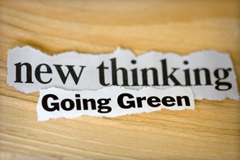Environmental Issues -
Why support the Save a Cup Scheme?
Save a Cup Company is part funded and supported by the vending and catering industry to provide a collection and recycling service to users of hard walled polystyrene vending cups. Below are some of the reasons for this support.
We plan to carry out a review at the management meetings of our services and where necessary, revise to realise our objectives with regard to this policy
- To provide an environmentally sound solution for the disposal of hard wall vending cups.
- To improve the image of the plastic vending cup, replacing disposable with recyclable.
- We provide an economic way of recycling vending cups.
- To demonstrate that as an industry we are proactive with regard to environmental concerns.
- To increase the range of services available to the client.
- To be prepared against the possibility of punitive taxes in later years as a result of the Packaging Waste legislation.
- To retain control of any costs imposed on cups designed to aid their recovery from the general waste stream.
- To ensure a clear line of communication is retained between the vending industry and legislative bodies.
| Typical Environmental Questions that Save a Cup are regularly asked. | |
|---|---|
| How long does the recycling process run each day, or for a typical run? | 24 Hours. |
| What is the bale wrapping made of? Is it polythene? |
No usually it is steel wire, or nylon banding. |
| Is the bale wrapping disposed of to landfill, incinerator or recycled? | Recycled where possible. |
| What proportion of product is substandard and has to be reprocessed? | All the collected cups are reprocessed. |
| Where does the substandard material re-enter the process? | The waste vending cups enter the process when they are collected from the end user. They are then transferred to a Waste Transfer station to be baled before being transported to the Reprocessor. On arrival at the reprocessors each delivery is given a unique identification number which ends in ‘W’ to indicate the material needs to be put through the washing plant prior to be reprocessed. |
| How many unprocessed bales make 1 tonne of recycled material? | Save a Cup ask for the bales of cups to weigh approximately 500 kilos, in practice they weigh approximately 450 kilos. |
| How much solid waste is produced from this recycling process. | Depends on the quality of the feedstock, cups can hold up to 30% residual liquor. |
| How much recyclate was produced during this time? | Approximately a 65% yield is achieved |
| Please indicate whether the waste is hazardous or not. | No |
| Is the waste landfilled, incinerated or recycled? | Recycled where possible. |
| What are the bulk bags made of? | Polypropylene |
| How is the recyclate transported to the customer? - Size of lorry, type of fuel, average load size, typical distance travelled to customer? | The recycled compounded material is transported usually in 1 tonne batches made up of 25 kilo bags (these can be paper or polythene depending on customer specification). These are then transported by lorry either rigid or articulated depending on other deliveries being carried out at the same time. All the vehicles run on ‘low sulphur diesel’. The distance from the reprocessors to the customer is hard to determine, as they are nationwide, could be 50 to 300 miles. |
| How are the unprocessed cups transported to the transfer station? - Size of lorry, type of fuel, average load size, typical distance travelled in collection run and to transfer station? | Save a Cup and its independent collectors in vans (e.g. we run a fleet of Jumbo Transits that have high tops and long wheelbases). All vehicles run on ‘low sulphur diesel’ to best of my knowledge. A typical weight carried is approximately 1 tonne when full. |
| What is the distance between the transfer station and the reprocessing plant? | It is difficult to estimate a typical distance travelled because the routes are always changing and the Waste Transfer stations are situated nationwide. An average distance between Waste Transfer Station and the Reprocessors would be in the region of 150 miles. |
| What is the electricity consumption for this specific process for a specified time? | 600amps approximately 1000K G/HR. |
| Is electricity the only source of energy used during the process? | Yes. |
| Provide details of any auxiliary materials used in the process eg lubricating oils etc | Water |
| What is the water consumption that can be allocated to this specific process for a specified time? | 1000 litres per hour. |
| Are there any energy outputs from the process eg heat produced in the process that is used in place of electricity elsewhere? | No |
| Are there any emissions to air, sewer or surface water? if so, can you please give the flows and concentrations and an estimate of the allocation to this specific process? | 1000 litres per hour to foul sewer. |
| How is the compressed air delivered and stored? | Generated on site by compressor. |
